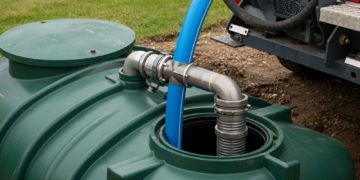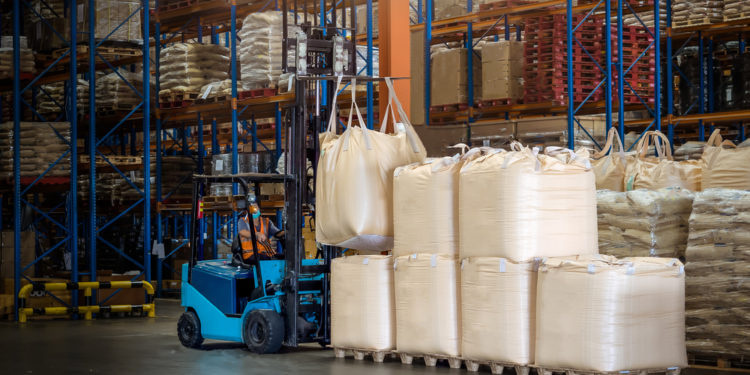Efficient bulk packaging is essential for transporting and storing large quantities of materials safely and economically. Industries ranging from agriculture to chemicals rely on high-capacity containers that offer strength, flexibility, and adaptability. Flexible Intermediate Bulk Containers (FIBCs), often referred to as bulk bags, are a preferred solution across sectors. These woven polypropylene bags are lightweight yet strong, and they can handle a wide range of dry, flowable products. As businesses seek to comply with safety and transport regulations, understanding the variety of FIBC bags and their certifications becomes increasingly important. For those navigating options in the industrial packaging space, exploring the standards and styles available can make a significant operational impact. Below, we examine key types of bulk bags and how they serve various needs. Make sure to read through for a complete overview of how to match the right bag to your specific packaging challenges.
Four-Loop Standard Bags
Standard four-loop bags are the most commonly used type of FIBC. Their design includes sturdy corner loops, allowing for easy handling by forklifts or cranes. These bags typically have a single-use design, though they can sometimes be reused depending on the application and condition. Their construction supports high load capacities and safe stacking during transport and storage.
Standard bags are versatile and can be equipped with different types of tops and bottoms, such as spouts or duffle closures, to suit specific filling and discharge requirements. Their cost-effectiveness and reliability make them a preferred option for grains, plastic resins, powdered chemicals, and more. They also allow for printing or labeling to support traceability. As one of the most cost-effective solutions in bulk packaging, they remain a foundational product for many global supply chains.
Baffle Bags for Space Optimization
When storage space or container efficiency is a concern, baffle bags are an excellent solution. These FIBCs have internal panels (baffles) sewn into the corners, which help maintain a square shape even when filled. This design minimizes bulging and allows the bags to stack more efficiently on pallets or in containers.
The structured shape helps optimize warehouse space and shipping volume, making baffle bags ideal for export purposes or dense goods. Their enhanced stability reduces the risk of tipping, especially during transport. Baffle bags also offer aesthetic advantages, presenting a cleaner and more uniform appearance, which is valued in retail or high-visibility storage scenarios. Industries such as pharmaceuticals, food processing, and specialty chemicals benefit significantly from the improved space utilization and polished presentation.
Conductive and Static Dissipative Bags
In environments where flammable materials are handled, static electricity becomes a significant safety hazard. FIBC bags are available in several electrostatic classifications—Type B, Type C, and Type D—each offering a different level of protection against static buildup.
Conductive (Type C) bags are made with interwoven conductive threads and must be grounded during use. Static dissipative (Type D) bags do not require grounding and are made with antistatic fabric that safely discharges static into the atmosphere. These specialty bags are crucial in the pharmaceutical, chemical, and mining sectors where hazardous powders or volatile atmospheres are involved.
Understanding the appropriate type of static protection is vital to prevent workplace accidents and ensure compliance with international safety standards. Choosing the wrong type of bag can lead to serious safety incidents, including explosions or product contamination. Regular training, proper grounding procedures, and procurement from trusted manufacturers are essential in mitigating electrostatic risks.
UN-Certified Bags for Hazardous Materials
Some industries deal with hazardous materials that require strict compliance with international transport regulations. In these cases, bulk bags must meet UN certification standards, which confirm they are suitable for transporting dangerous goods. These standards involve rigorous testing, including drop tests, top lift tests, and stacking strength assessments.
Bags that meet these criteria are marked with specific UN codes indicating their classification and tested performance. The design and documentation of these containers must follow guidelines established by the United Nations Recommendations on the Transport of Dangerous Goods. Using UN-certified FIBC packaging ensures that hazardous substances are handled responsibly and that legal transport obligations are fully met.
These certifications are not only essential for safety but are often required by regulators and insurers. Industries such as waste management, chemical production, and defense manufacturing frequently use UN-certified bags to ensure that their handling of dangerous goods is transparent, compliant, and risk-mitigated. The global acceptance of UN standards provides peace of mind in cross-border logistics.
Custom Features and Add-ons
FIBC bags can be tailored with features such as liners for moisture protection, UV stabilization for outdoor storage, and food-grade certifications for agricultural or consumable products. Liners can be inserted or integrated into the bag to protect sensitive materials from contamination or moisture.
Other customizations include printing, barcoding, and color-coding for easy identification and inventory control. Discharge and filling spouts can also be customized for specific machinery compatibility. These adaptations make FIBCs even more valuable across diverse applications, enabling businesses to meet niche operational demands with precision.
Additional features may include tamper-evident seals for security purposes, reinforced lift loops for heavier payloads, and specialized coatings for chemical resistance. Advanced manufacturing technologies have enabled the development of hybrid bags that combine the best aspects of multiple bag types, offering both static control and space efficiency, for example. These innovations continue to push the utility of FIBCs into new sectors and use cases.
As regulations evolve and industrial needs shift, having the right type of bulk packaging can be a strategic advantage. Whether transporting powders, granules, or hazardous substances, choosing the correct bag design and certification ensures compliance, safety, and efficiency. With tailored options available for almost every industry, FIBC packaging remains one of the most adaptable and trusted solutions in bulk logistics today.
Ultimately, selecting the right FIBC solution comes down to understanding your material’s specific handling, safety, storage, and transportation requirements. Collaborating with knowledgeable suppliers and staying current with regulatory standards ensures that your packaging approach remains agile and compliant in a changing industrial landscape. Investing in quality bulk packaging translates to better protection, fewer disruptions, and more confidence in your supply chain from origin to destination.











































































